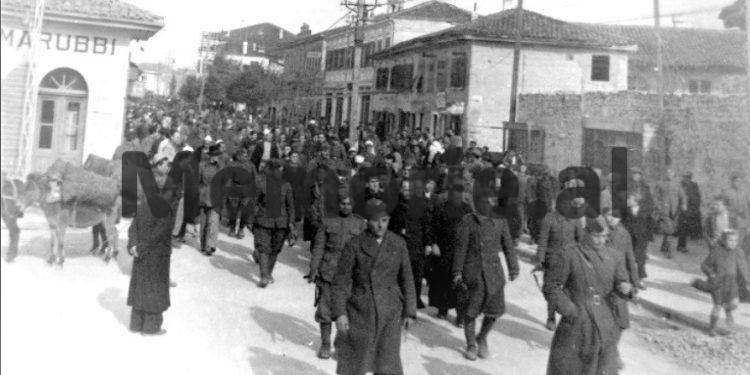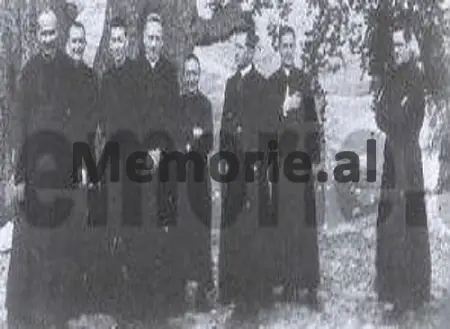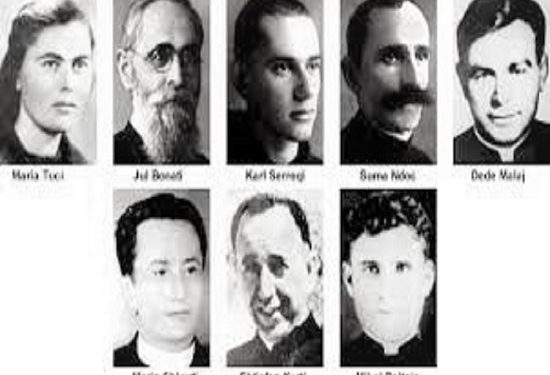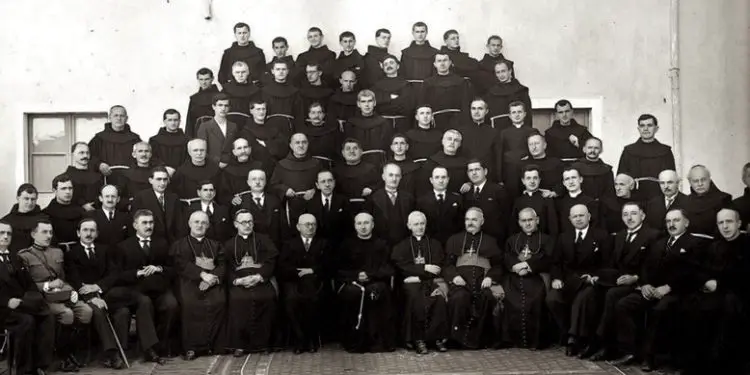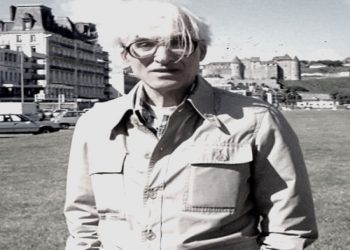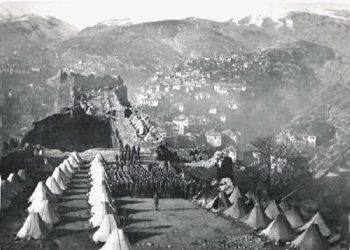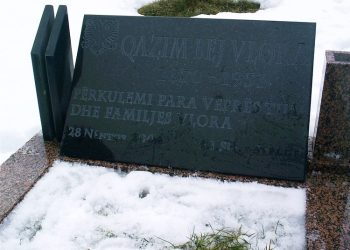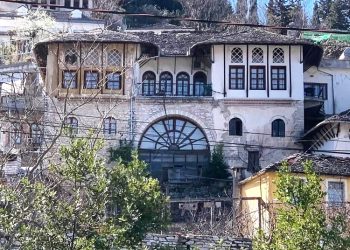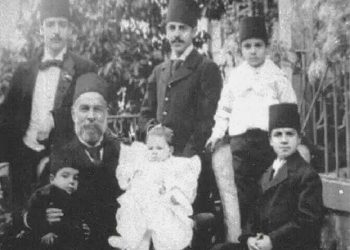By Pirro Dollani
Memorie.al / The day of the celebration of the Rite of Beatification and Altar of the 38 martyrs, which took place on November 5, 2016, on the occasion of the visit of Pope Francis to Tirana, (where among them was the name of Monsignor, Prof. Jul Bonatti), along with the general public, there would also be clergymen from all religions, as well as politicians and rulers, etc. There is no doubt that among them, on that day, there were also some of the “crusaders” of these martyrs, those who, while torturing and shooting them, mocked them, saying: “Hey, where is your God “?! These executioners are still alive, but they have changed their skin and put on the clothes of a democratic man. Not a few people would like to have a revenge on them, as they deserve it. But for true Catholic Christians, revenge is unacceptable. As Monsignor Massafra said: “We hope that they will be present at the Feast of November 5. To be fully convinced that God was there, in the stinking cells before the execution platoons…! …Even on November 5, 2016, God would be there!”
Who was Monsignor Prof. July Bonati?
Jul Bonati was born in Shkodër on May 24, 1874, in a family with outstanding patriotic traditions. His grandfather, Nikollë Bonati, was one of the founders of the “Letters of Istanbul” Society. Monsignor Jul Bonati studied at the Saverian College of Jesuits in Shkodër and then he graduated in Philosophy and Literature in Vienna, Austria and in Padua, Italy. In 1912, he surrendered to the diocese priest and settled in Istanbul, to serve as the vicar of the Albanian Catholics who were there.
Bonati served for 16 years in Istanbul, where he took an active part in the Albanian national movement. From 1920 to 1924, he was a member of the “Albanian Threshold” Club, headed by Jonuz Bej Kolonja and Anastas Frashëri. From 1942-1945, he lived in Italy, where he continued his scientific and literary work until the end of 1945, when he returned to Albania.
Return to Albania in ’45 and arrest by the State Security
In 1946, when he was 72 years old, he was arrested by the State Security, and with decision no. 429 dated 31.10.1947 of the Military Court, has pleaded guilty to the crime: Agent of the Vatican and is sentenced to 7 years of imprisonment. In the investigator, Venerable Prof. Jul Bonati affirms that: “In 1945 we gathered in Rome, in a meeting with Pope Pius XII. From there, the English brought me by plane to Albania”. Died massacred in the prison hospital on November 5, 1951. According to Prof. Dr. Ajet Shahu, “Mr. Jul Bonati was found in a room in pieces, written by the “unconscious” patients. In this barbaric way, the philosopher, humanist, researcher, translator and priest, Jul Bonati, would end his life.
Fragments of memories narrated by his family and relatives
Even though under the communist regime it was very difficult to speak and remember your relatives who the government called Enemies of the People, still people tried to keep their name and memory alive.
Aleksandër Bonati, the grandson of Monsignor Jul Bonati and who inherits the name of Jul Bonati’s father, says: “Our grandmother was very brave and took us children to see our grandmother in prison. Father always told him not to go because something bad would happen to us. But nana answered him: ‘don’t worry, Jerom, that we get Juli’s blessing. ‘At home, the parents talked about Monsignor Juli Bonati, but with reservations, that the circumstances were very bad and the fear was that we children, unintentionally, could speak out and the consequences would be drastic.
For the first time, I talked about it outside the house, many years later, when I was working as a teacher. A colleague, older than me, Prof. Burhan Hoti, takes me one day apart, away from the people and the walls of the school, and in a corner of the yard, he says: ‘I want to say something. You must know that, from both of your parents, you are a very patriotic family. Your father’s great-grandfather, Jul Bonati, was a great personality and patriot, despite his life’s defeats.
He was the assistant of Mr. Luigj Bumçi, the head of the Albanian delegation at the Peace Conference, and, entrusted by the delegation of the Albanians of Istanbul, went to Paris together with 50 thousand signatures, where it was requested that Korça and Gjirokastra should not be given to Greece. ‘This was the first time in my life, where I was openly spoken about the figure of Monsignor Jul Bonati.
Similarly, the other grandson, Mr. Anton Bonati, remembers: “I remember that mother, Esther Bonati, took us children to go to the prison hospital, to meet Monsignor Jul Bonati, that as she told us, the next day they would take him out. When we met him, he said to his mother: ‘It’s good that they put me in prison unjustly, but why did they crush my knees, shooting me with iron objects? I’m very worried that I won’t be able to hold the Mass when I get out of prison!
I remember the mother who told him: “Don’t worry, Jul, you can give Mass with a cane, with a cane”! He was silent for a moment, his face brightened and he said: ‘Ah, I hadn’t thought of it’! He had saved the ration of marmalade they gave him for breakfast and gave it to us children. The next day, we waited for him to come out of prison, but we were told that he had died. A sudden death. We heard from the parents that some other “sick people” had beaten and chopped him.
The people of Durrës suffered his death in silence. Unfortunately, only family members were at his funeral (3-4 people in total), as people were afraid of communist terror. The city of Durrës has historically been known for interfaith harmony between Muslims, Orthodox and Catholics. Undoubtedly, prominent clerics contributed to this harmony: Mustafa Varoshi, Erazmi Jorgo, Vinçenc Prendushi and Jul Bonati, who went out for walks together through the streets of the city.
Journalist Gëzim Kabashi remembers a conversation with Mr. Ilia Jorgo, the son of Father Erazmi Jorgo, who told him that his father was often associated with the Mufti of Durrës, Mustafa Varoš and Monsignor Jul Bonati. A wonderful tradition that Monsignor Jul Bonati, he had also given his help and that should be renewed in our time.
The activity of Jul Bonati, as a translator and with scientific studies
Venerable Jul Bonati is also very busy with scientific studies and translations. Aleksandër Bonati, tells how a cousin of his and also of Monsignor Jul Bonati, Mr. Mario Kolenda, residing in Brazil, had received a letter from Monsignor Bonati, in which he wrote that during his 16 years of stay in Istanbul, he had sought the archives there and had collected many valuable materials for our country.
Likewise, during the period that he had been ill in Florence, he had finished the translation into Italian of the major work “Lahuta e Malcis” by Father Gjergj Fishta and had just started working on the translation of Lekë Dukagjin’s “Kanunin”. Pope Pius X said to Monsignor Jak Serreq: “You are blessed to have a martyr like Monsignor Bonati, who played the Malci Lute” in Italian!
Prof. also makes this statement. Arshi Pipa. “One day, Monsignor Jul Bonat, the vicar of Vlora, was brought to our cell. They brought him to the insane asylum in Durrës. I had known since I had a student in Firenze. At that time, he was trying to print his own translation of “Lahuta Malcia”!
This side of Monsignor Bonati’s creativity had the same tragic fate as a large part of Zef Serembe’s creativity.
Of the entire translation of “Lahuta e Malcis”, by Monsignor Jul Bonati, we only have the Fifth Song left, while we know nothing of the “Canon of Lekë Dukagjini”. According to Mr. Aleksandër Bonati, a cousin of his and Monsignor Jul Bonati, Mr. Mario Kolenda, who lived in Bari during 1945, helped Monsignor Jul Bonati, carrying three boxes full of Monsignor Bonati’s studies and writings, to the UNRRA Albanian Mission in Bari, in order to send them to Durrës.
The letter of Mr. Mario Kolenda from Italy, for Monsignor Jul Bonati
Mr. Mario Kolenda also had a letter that Monsignor Bonati personally addressed to Mrs. Pennington, in charge of this Mission. After all the relevant actions have been taken, Mrs. Penington, returns the letter to Mr. Kolenda, who before he died, sent his cousin, Aleksandër Bonati, a letter that we are publishing in this article:
“I am asking UNRRA, the Albanian mission in Bari, on Dante Aligeri Street, to kindly send to UNRRA in Durrës, three packages summarized in a single box, notifying Mrs. Ruth V. Penington of UNRRA, the Albanian mission CMF Durrës, that the aforementioned box belongs to the undersigned Monsignor Jul Bonati.” A thousand thanks, Prof. July Bonatti.
These materials were transported from Italy and arrived in Durrës, but Monsignor Jul Bonati, after returning to Albania, ended up in prison, and this part of his creativity, it is not known where it is or who appropriated it. It is the duty of the relevant institutions of the Albanian Academy of Sciences to research this creativity of Monsignor Jul Bonati.
Where do his bones rest?
The remains of Monsignor Jul Bonati, so dismembered by the red barbarians, rest in the family tomb, Bonati in Spitall, in the old cemetery of Durrës, together with his nephew, Jerom Bonati and his wife, Est’heri, the brave woman, who went to prison as well as with Jerom Bonati’s mother, Evgjen.
Next to the grave of Monsignor Jul Bonati, there is also the grave of another figure, equally valuable with him, in many aspects, namely, the grave of the well-known doctor Ben Çetta, (the brother of the well-known Kosovar academic, Prof. Dr. Anton Çeta ) who gave everything he had for the people: knowledge, service, heart and received the same reward as Monsignor Jul Bonati: prison, even longer than Monsignor Bonati.
Is it a coincidence that their graves are nearby? Maybe yes, but the heart tells us no, no! For Monsignor Jul Bonati and Dr. Ben Çetta, as the people say, “was written”, to be near and in eternal company with each other, since not only knowledge, hearts, souls, but also fates were the same: they gave everything they had for the Albanian people and as a reward they received contempt, torture, and prison!
Monsignor Prof. Julius Bonati, One of the Thirty-Eight Martyrs
Precisely, 65 years from the day of his death, on November 5, 2016, the Rite of Beatification and Ascension at the Altar of Monsignor Prof. Julius Bonatit, along with 37 other martyrs. Is this a coincidental or predetermined coincidence to erase from the memory that barbaric death so that, after the sod, the day of November 5 will remain in the memory of the nation as the white day of the Blessing and the Ascension to the Altar of Reverend Prof. Jul Bonati along with the other 37 martyrs?
Precisely, on November 5, 2016, the historic day of the Rite of Beatification and Elevation at the Altar of 38 martyrs who gave their lives for the Nation and Religion would be held. To arrive at that Historic Day, it has gone through a long process of analysis, from November 10, 2002 – until December 8, 2010, by the experts of the Congregation of the Holy See on the issue of the Holy of Holies.
The process ended on April 26, 2016 when Pope Francis signed the decree to declare Lumë, the 38 martyrs. Only two months after the canonization of Mother Teresa, came this tribute to the 38 martyrs. In the decree, Saint Stephen’s Cathedral Square, in Shkodër, was designated as the place where the ceremony would take place. The Prefect for the Cause of Saints, His Eminence, Cardinal Angelo Amato, was appointed Director of the Rite of Beatification.
In the list of 38 names of martyrs, (which are not listed in alphabetical order), the name of Monsignor Jul Bonati is listed third with this motivation: “The great intellectual priest, imprisoned, tortured, locked in madness; how he experienced unheard of horrors in different cells of the infamous Security, from Vlora to Durrës, he died in Durrës prison, next to Monsignor Prenuš, who gave him the blessing for the night’s journey: Holy Vojim! Memorie.al





